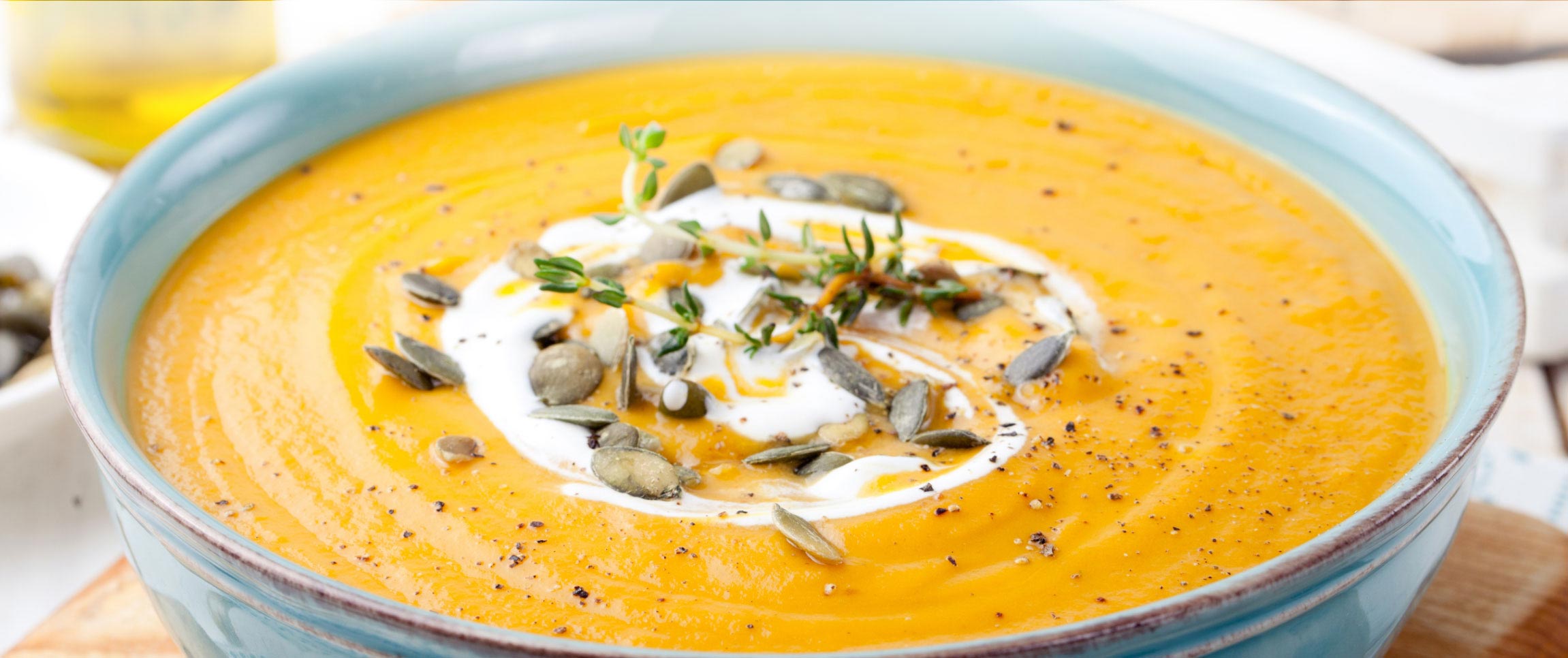As the days grow shorter and a little chillier, tastes shift from summer’s light and refreshing flavors to the heavier, denser ones of fall. Squash immediately comes to mind, but far too often only as a dusty display on the credenza. A plate is really where a squash belongs, the trick is figuring out what to do with it.
Soup is an easy choice and one that lends itself to the season. Creamy butternut or acorn soups are easy recipes to prepare and always popular, especially with a little fresh grated nutmeg. They’re creamy enough to roast and serve pureed with just a drizzle of crème fraîche and fresh chopped chives to elevate both the taste and the look. For this reason, squash can be a healthy alternative to heavy creams. It’s lower in calories and fat, yet still able to give the dense thickness that is desired for a crab or shrimp bisque. The flavor profiles of squash pair well with the requisite splash of sherry, too.
Squashes also make wonderful, thick purees that are perfect for stuffed pastas. Perhaps pumpkin ravioli with sage brown butter? Replace the caloric ricotta in stuffed shells with butternut squash, perhaps adding a little spinach and lemon zest to brighten the flavors. Thin out the puree and dial up the garlic and peppers—suddenly instead of a stuffing you’ve got a sauce that can dress any pasta, from gnocchi to orecchiette, even good old spaghetti noodles.
Roast It
Or you could roast up a batch of patty pan squash—the odd little white squash with scalloped edges—and layer them between lasagna noodles along with shallots, garlic and cherry tomatoes, drizzle with olive oil and whole basil leaves for a vegetarian lasagna like no other.
Roasting is actually one of the best ways to prepare squash, regardless of the final disposition of the ingredient. It helps soften and reduce moisture content to your desired level. And, since it can be quickly reheated without product degradation, this makes it an ideal addition to otherwise labor intensive menus. Take spaghetti squash, a lovely alternative for people trying to avoid carbs. Roasting until it’s par-cooked (able to be shredded with a fork, but still slightly crisp) will allow you to extract the squash in its spaghetti-like form, then reserve until needed. Finish in a little hot water or even in the sauce you’re serving it with and it’s ready to go.
Roasted, large chunks of squash are just as easily used and make a great alternative to meat in curries or a stews, especially when roasted until very firm. Just brush the cubes with olive oil or butter and season well. Start with salt, of course. Fresh cracked white pepper with its slightly milder flavor profile can sometimes work better than black. Always finish with fresh grated nutmeg.
You can even use squash to make a ratatouille. This brightly seasoned dish of roasted vegetables, including onion, tomato, all manner of squashes, and fresh herbs, is great as a side or even a main course, but a well-placed spoonful atop a beautifully roasted piece of cod can replace a heavy, fatty sauce for those on the search for healthier fare.
Sweet Treats
There there’s pie. If it’s a squash, you can probably put it in a pie, sweet or savory. Serve it for dessert or even as a meal. Yes, a pumpkin pie with fresh whipped cream is a great way to end a meal, but what if you went with a sage and butternut pie with Stilton cheese for your main? Of course, you could do both.
Replacing the dairy with squash is also a great way to add a couple of vegan dishes to the menu without losing the creamy texture and taste some dishes need. When experimenting, remember there are some flavors that squash just scream for, including nutmeg, sage, pepper. Not always together, but you’d be surprised how often they can create a delicious flavor harmony. So, get that squash down off the display and have some fun with it.



